[ANSWERED] What's Considered Workplace Harassment?
These definitions are pretty vague, so they might not help much if you’re trying to identify the misconduct. To make things more clear, let’s go over specific examples of what’s considered workplace harassment.

Making jokes in the workplace can improve the environment, as long as they’re in good taste. In fact, humor has benefits for employees.
BetterUp describes different types of humor and how they can improve aspects of a company and its employees. However, it also goes on to say how certain types of humor can end up having negative effects.
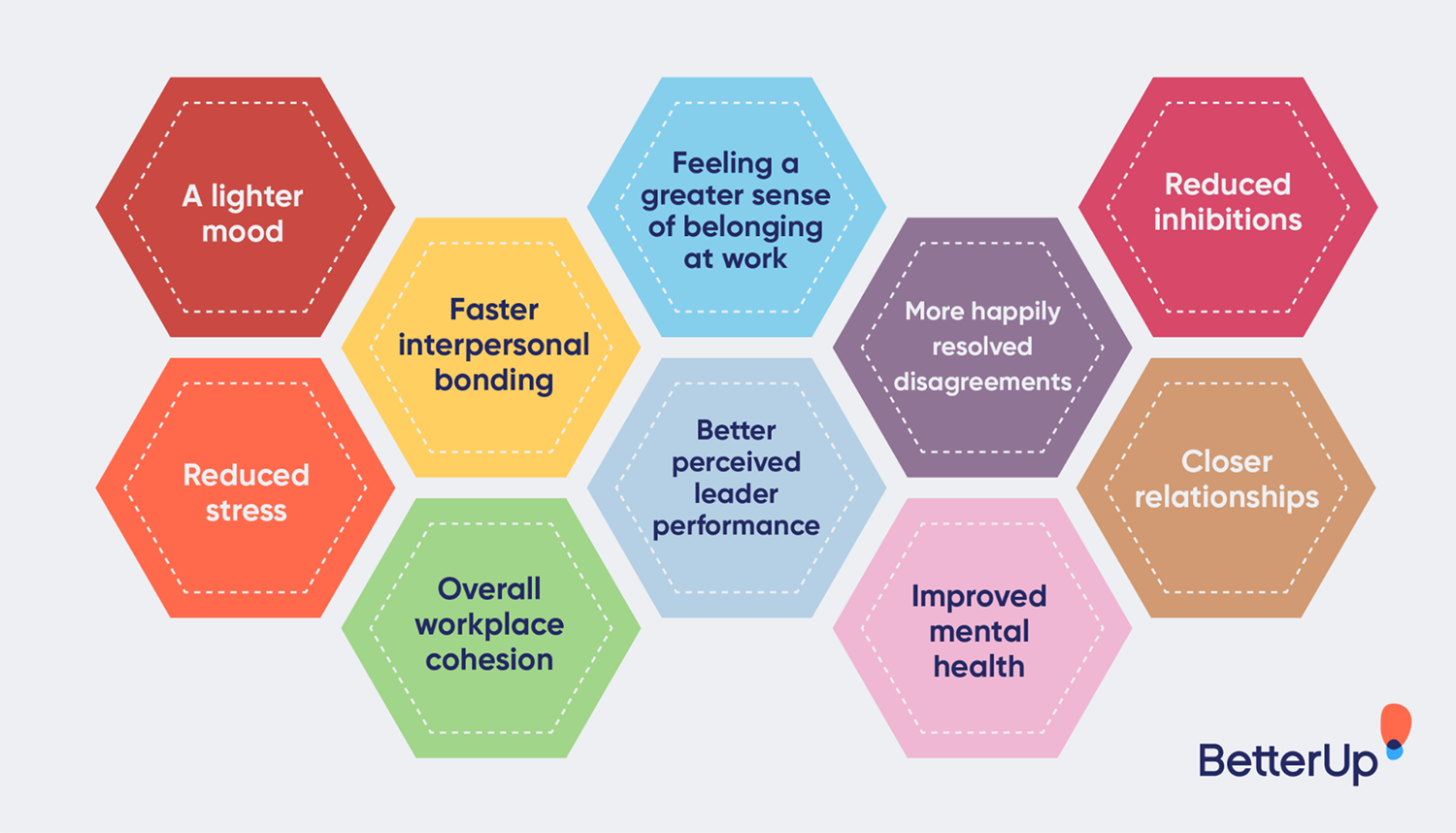
Sometimes, jokes end up crossing the line of harassment if they become offensive and repetitive.
The federal government deems any form of harassment in the workplace unlawful. This is especially true if the behaviors are so frequent or severe that they create a hostile or offensive work environment.
Harassment doesn’t only involve jokes, and it isn’t always verbal. So what’s considered workplace harassment, then?
This negative behavior can include any crude words, actions, or gestures. There are two main types: sexual and non-sexual workplace harassment.
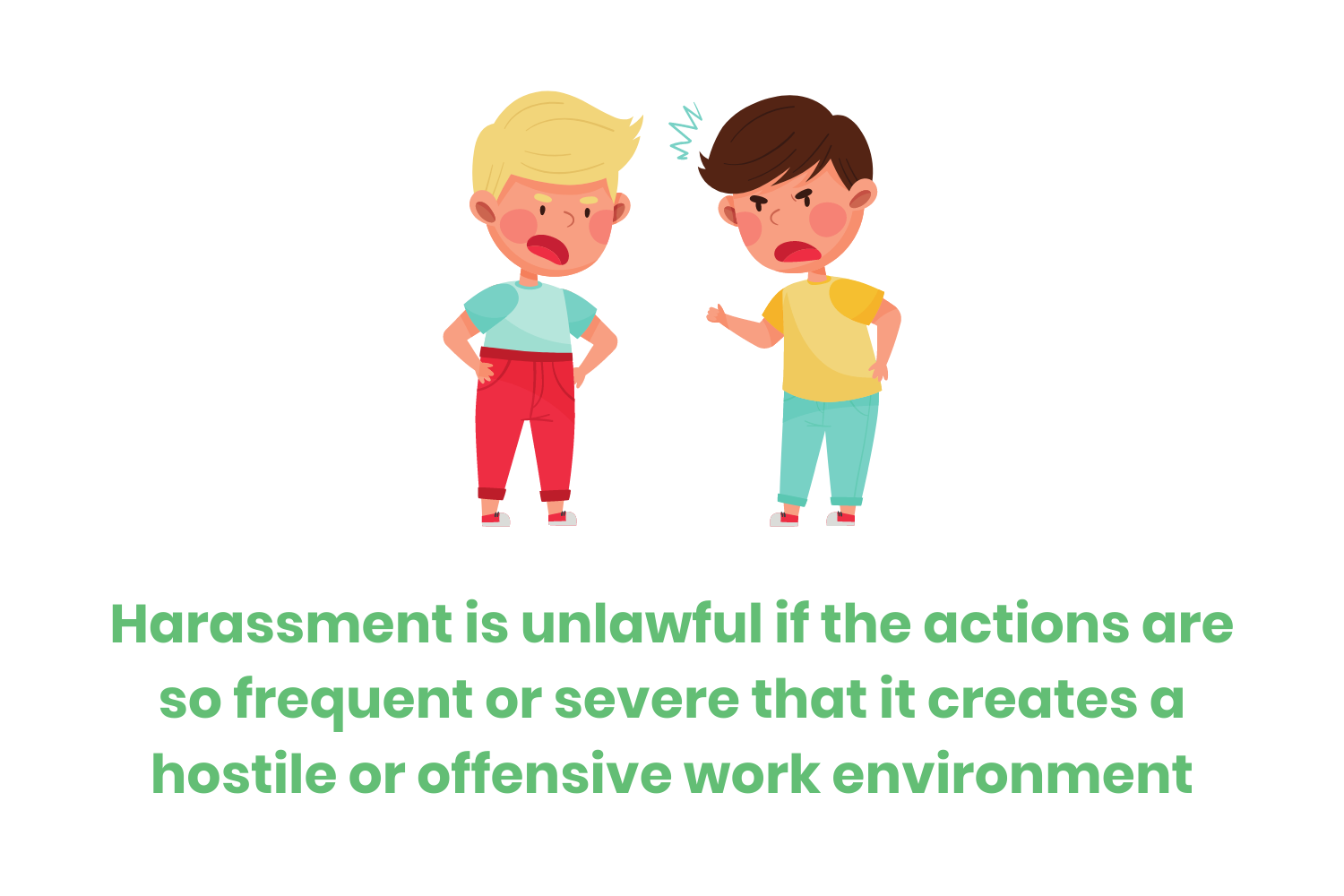
According to the U.S. Equal Employment Opportunity Commission (EEOC), sexual harassment is any unwelcome sexual advances, requests for sexual favors, and other verbal or physical harassment of a sexual nature.
Non-sexual harassment encompasses all other inappropriate and unwelcome misconduct.
These behaviors are a form of employment discrimination that violates one of the following…
- Title VII of the Civil Rights Act of 1964
- Age Discrimination in Employment Act of 1967 (ADEA)
- Americans with Disabilities Act of 1990 (ADA)
These definitions are pretty vague, so they might not help much if you’re trying to identify the misconduct. To make things more clear, let’s go over specific examples of what’s considered workplace harassment.
In-Depth Definitions
I briefly went over the definitions of this misconduct above. To truly grasp what’s considered workplace harassment, you need to have an in-depth understanding of the legal definitions.
The EEOC defines it as any unwelcome conduct based on…
- Race
- Color
- Religion
- Sex
- National origin
- Age
- Disability
- Genetic information
Discrimination based on "sex" includes sexual orientation, gender identity, or pregnancy. The federal definition of discrimination against age applies to victims over the age of 40. And genetic information refers to family medical history.
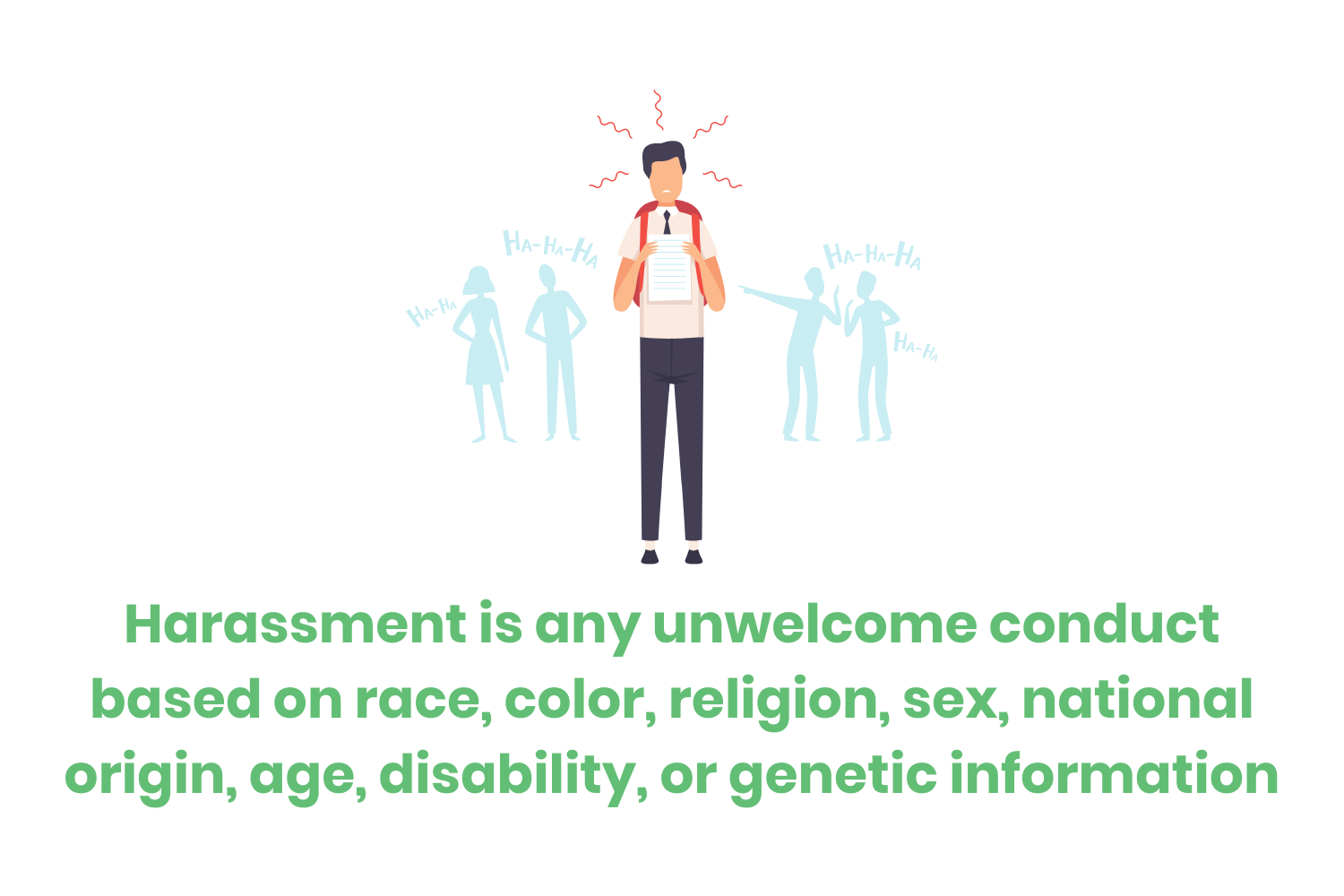
There’s a fine line between workplace humor and harassment. Some people might consider specific actions or words appropriate, while others feel that it creates a hostile environment.
Actions or words become unlawful when…
- Experiencing the offensive conduct becomes a condition of continued employment
- The behaviors are severe enough that they create an environment that an average, reasonable person would find abusive, intimidating, or hostile
That second part is especially important. The behaviors can often be up to interpretation, hence why some people might view a comment as a joke while others find it offensive.
The legal process may find someone guilty of harassing a co-worker if a jury interprets the situation as qualifying as this unlawful behavior.
Sometimes, it’s more than just inappropriate actions or words to an employee. A workplace may even retaliate against someone who…
- Filed a discrimination charge
- Testified as a witness of discrimination
- Participated in an investigation or lawsuit about harassment
As if the first instance of harassment wasn’t enough, this retaliation just adds to it. Anti-discrimination laws prohibit this type of retaliation against a victim or a witness.
Sexual Harassment Examples
Sexual harassment isn’t limited to making inappropriate physical advances. It includes any unwelcome behavior that creates an uncomfortable or hostile situation, and it can be either physical or verbal.
With this in mind, let’s go over some possible scenarios which would qualify as this illegal misconduct.
Sharing Inappropriate Media
Sharing explicit and inappropriate sexual images or videos with co-workers is a form of harassment. Because these are usually digital, this can even occur outside of working hours.
Sending this content through a text or message outside of work still qualifies since it makes for an uncomfortable situation between colleagues. This is especially true as more companies shift to remote environments.

An employee may think it won’t cause any harm since they don’t have to see the person face-to-face. But it still creates a hostile situation and makes the recipient uncomfortable.
It doesn’t matter who’s in the image or video, either. Whether it contains the person who’s sharing the content, another co-worker, or a total stranger, it’s still inappropriate. Yes, this means that even showing an explicit image of a celebrity is off-limits.
Sending Suggestive Messages
It’s just as offensive to send suggestive messages to a colleague. This could be in through…
- Letter or note
- Text message
- Social media
- Google Chat
- Other forms of communication
As you can see from this list, it can be a physical or digital message. Again, the form of communicating these doesn’t matter since any method would create discomfort for the recipient.
Displaying Inappropriate Sexual Media
I don’t know about you, but I work in a cubicle like many other Americans. I personally don’t decorate my cubicle, but many of my coworkers put up images of their families, artwork, inspirational quotes, memes, comics…you get the idea.
Thankfully, these examples are harmless. But that isn’t to say that every company’s employees display tasteful images.
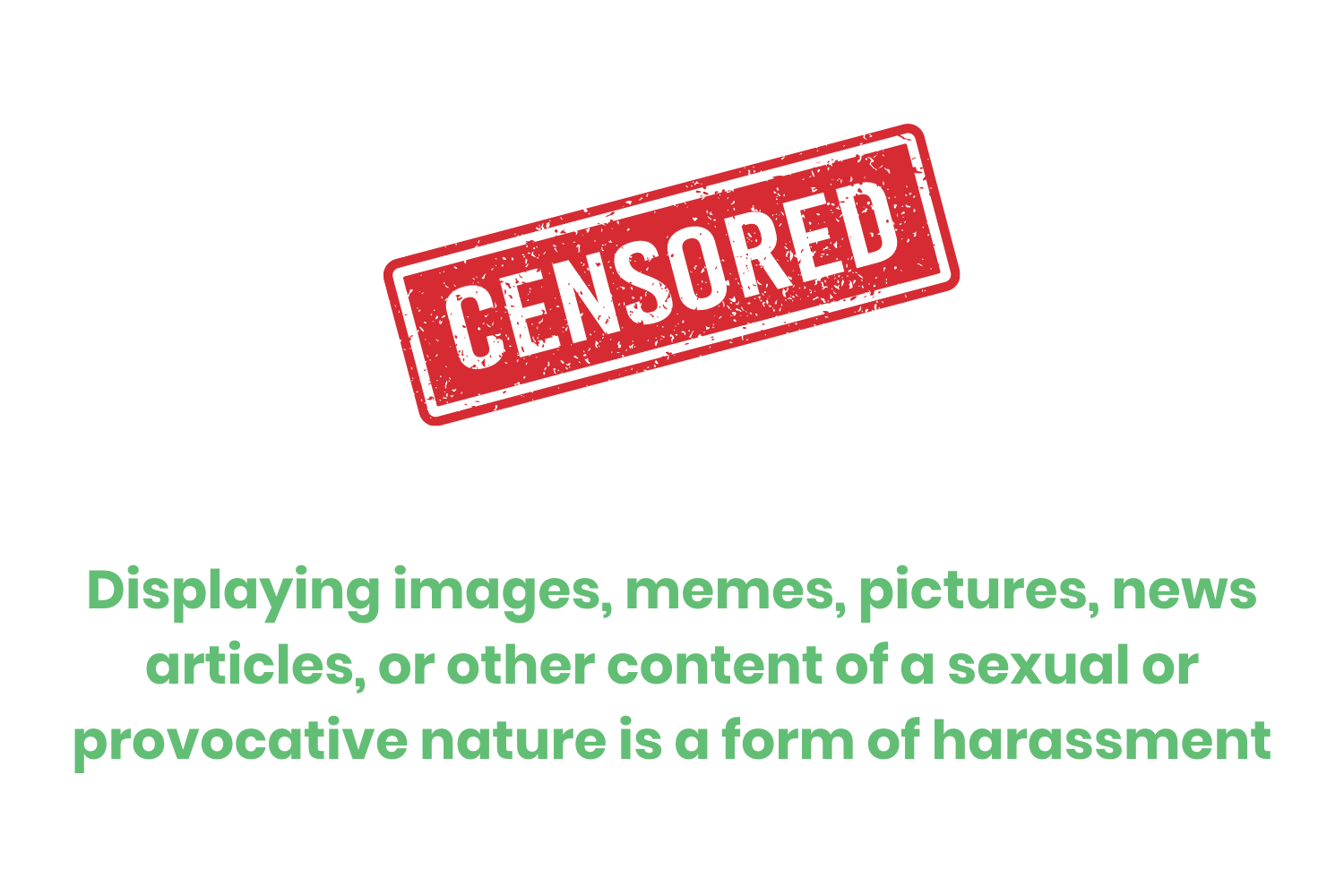
Just like it’s offensive to send this type of content to someone, it also shouldn’t be visible to people within the office. It would make anyone uncomfortable if they get greeted with these images when they visit that co-worker’s desk.
Lewd Jokes or Sexual Anecdotes
I mentioned earlier that some people don’t know what kind of jokes can qualify as harassment. Sexual humor of any kind would fall into the category of comments you shouldn’t make. This includes jokes about gender, sexual orientation, or sexual activity.
A jury could deem this lewd language unlawful. One isolated comment wouldn’t qualify as this harassment unless it was so severe. But when this language persists, especially despite complaints or warnings, then it could turn into a lawsuit.
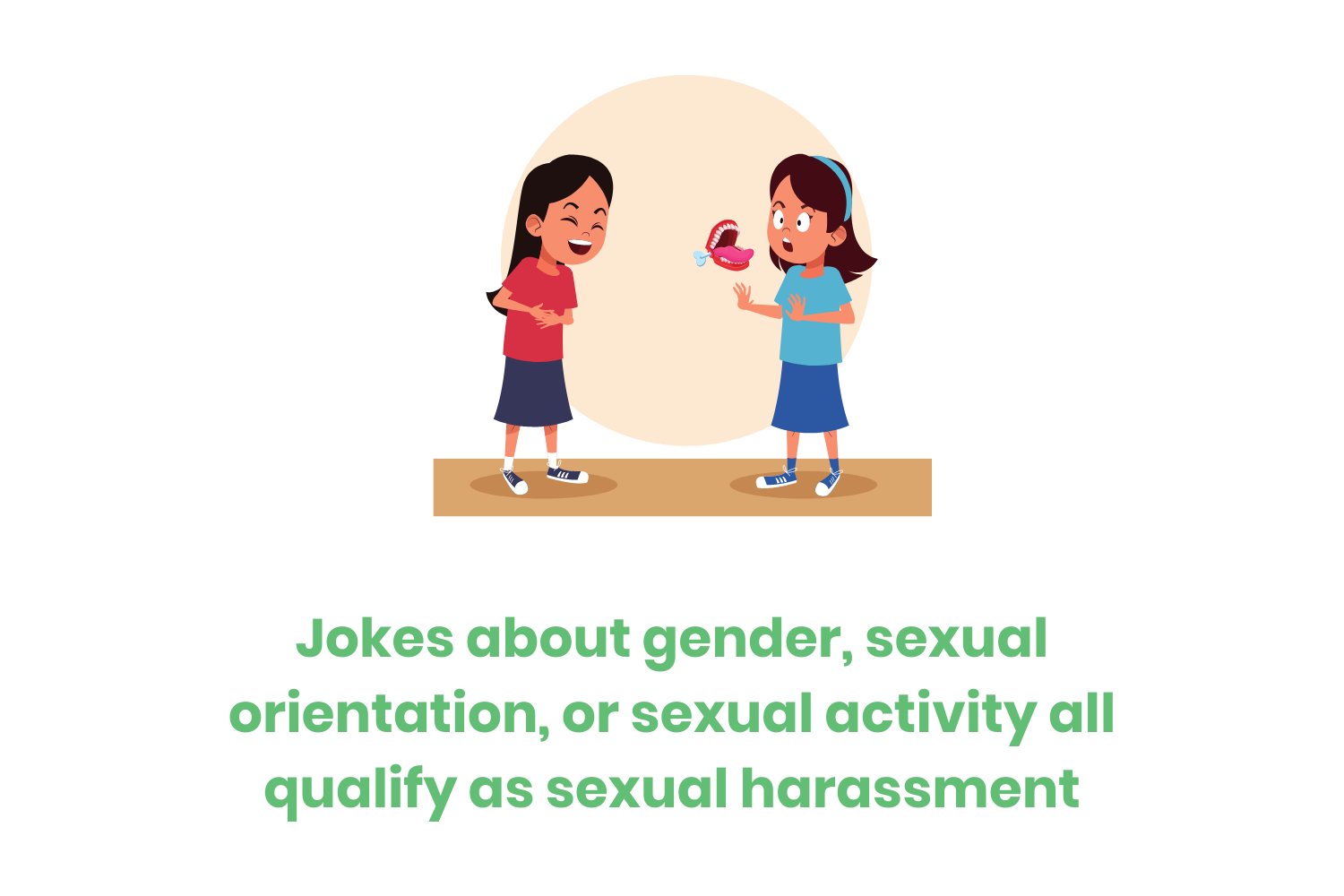
Sexual Gestures
Sexual gestures of any kind are another form of misconduct. This impacts anyone who witnesses or experiences it.
These actions can make someone feel threatened and concerned about if it would escalate into more than just a gesture. Because this creates an intimidating environment, it causes a hostile workplace.

Non-Sexual Harassment Examples
Non-sexual harassment also includes either actions or words. However, people interpret situations differently. So again, employees must know what behaviors are unlawful and create a hostile situation.
Any type of conduct that’s threatening, insulting, intimidating, or discriminatory can qualify as non-sexual harassment. This behavior is just as harmful to the workplace as sexual misconduct.
Racist Slang, Phrases, or Nicknames
Any demeaning or taboo language regarding someone’s skin tone, ethnicity, or race is verbal harassment. Some common examples that you’ve probably heard before include…
- The N-word
- The color “yellow” when directed towards someone of East Asian descent
- “Savage” when directed towards a Native American or First Nations person
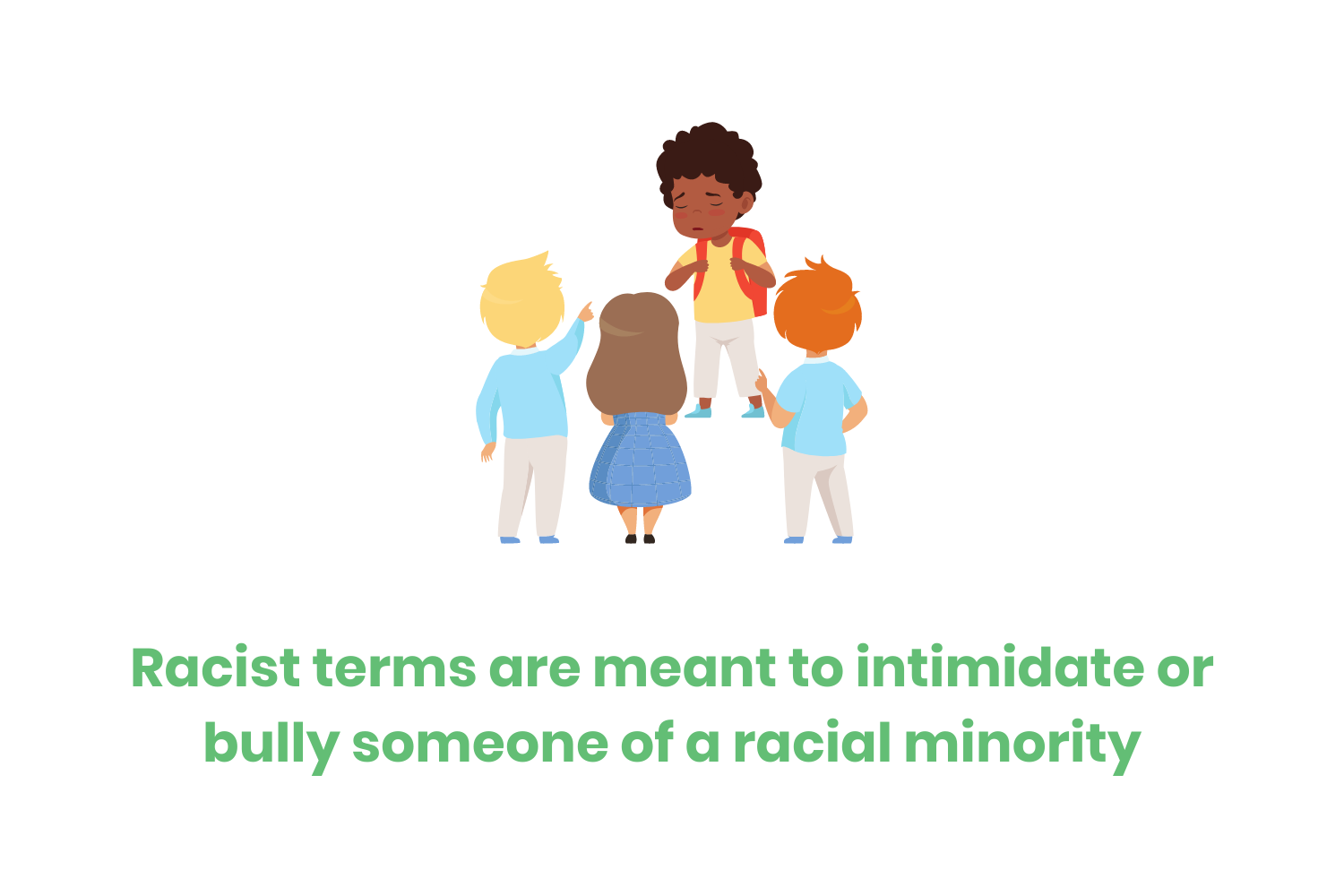
Phrases like these bully or intimidate minority groups. Using these at work would make them feel unwelcome and discriminated against. This kind of language is illegal and can cause emotional damage to the victim, especially if it persists.
Displaying Discriminatory Media
Similar to displaying sexual content, showing discriminatory media against any group is also harassment. Even someone who isn’t part of that group could still find it offensive, especially if it pertains to their family or friends.
These negative images and messages about a minority would intimidate them. They could appear as threats or turn into other forms of harassment such as verbal abuse and racial slurs.
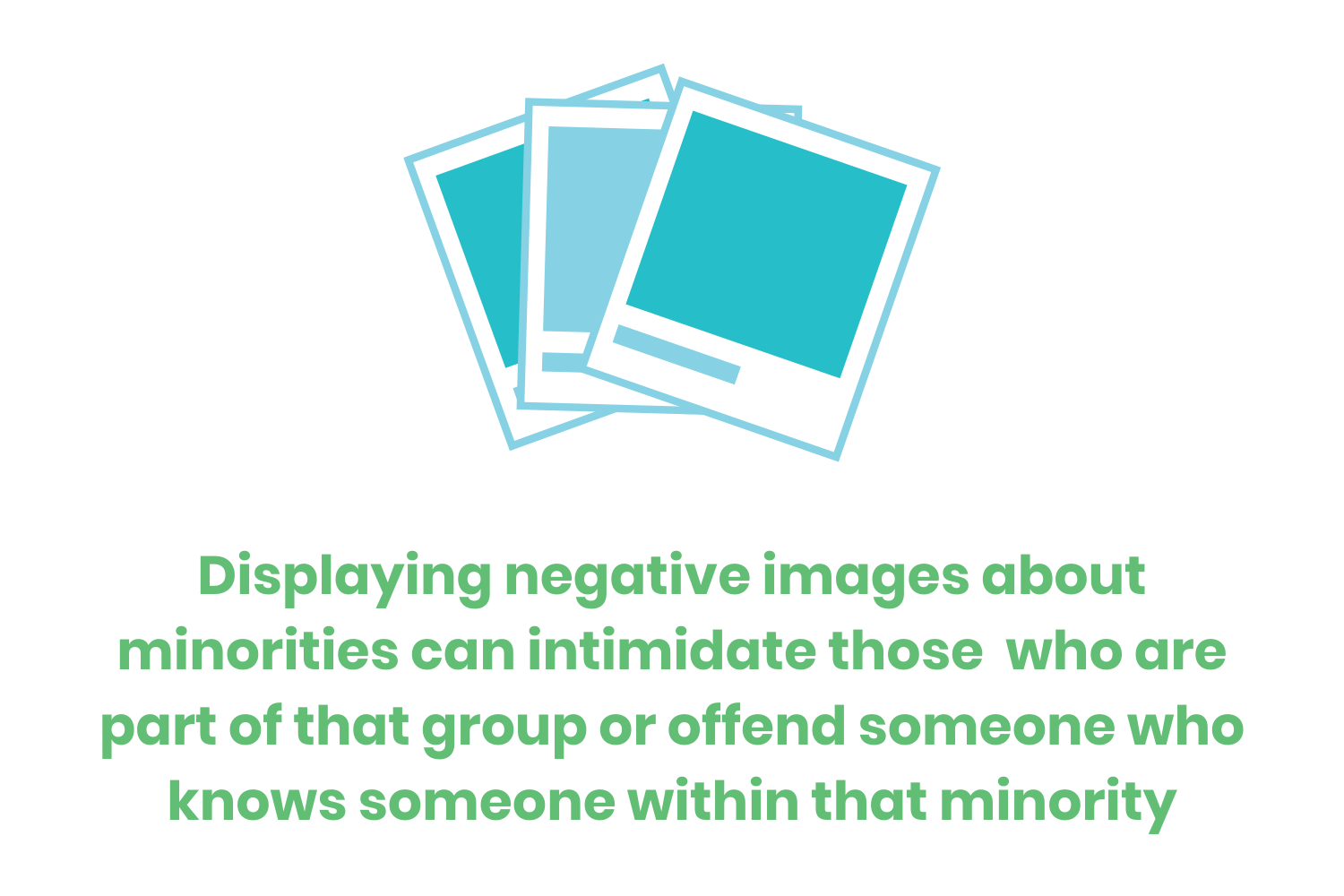
Offensive References to Disabilities
Making jokes about someone’s disability is offensive because it’s such a sensitive topic. Often, people can’t control their mental or physical disability and limitations.
These inappropriate references may be…
- Directly to the individual
- To someone else while the disabled individual is intentionally or unintentionally within earshot
- Completely behind someone’s back, without the disabled individual’s knowledge
No matter who the comment is to, this type of activity can become illegal if it continues since it’s discriminatory.
Derogatory Age-Related Comments
“Ageism” is a term that refers to biases against people based on their age. This bias often relates to differences between generations when it comes to acceptable behavior, the usage of slang, and the ability to use today’s technology.
This form of discrimination can be illegal depending on who the victim is. The ADEA states that age-related discrimination in the workplace against people 40 years or older violates the law.

It’s important to mention that there are no federal laws regarding ageism for those under the age of 40. However, some states do have laws to protect younger employees. For example, Maryland’s age-related laws don’t stipulate a minimum or maximum age. This means that the law protects both younger and older employees from age discrimination.
Wearing Clothing with Offensive Messages
The overall workforce dress code is much more casual today compared to 50 years ago. In fact, companies that offer a casual dress code jumped from 32% to 50% between 2014 and 2019.
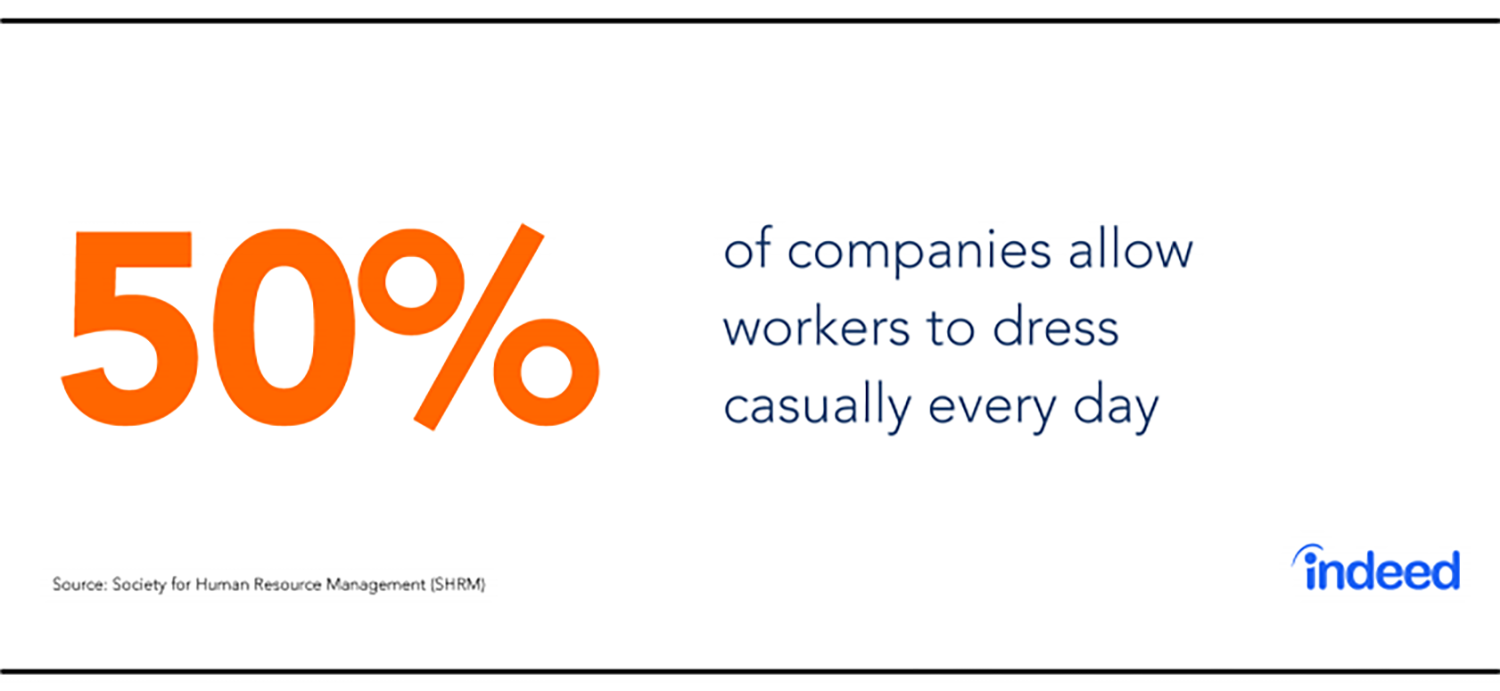
It’s rare to find a company where everyone wears suits. Nowadays, you’ll find people in jeans, polos, and possibly even t-shirts.
This new dress code isn’t the problem, specifically. The issue comes when people abuse this casual dress policy to wear offensive clothing. Graphic t-shirts with derogatory images or words can intimidate, upset, or threaten someone at work.
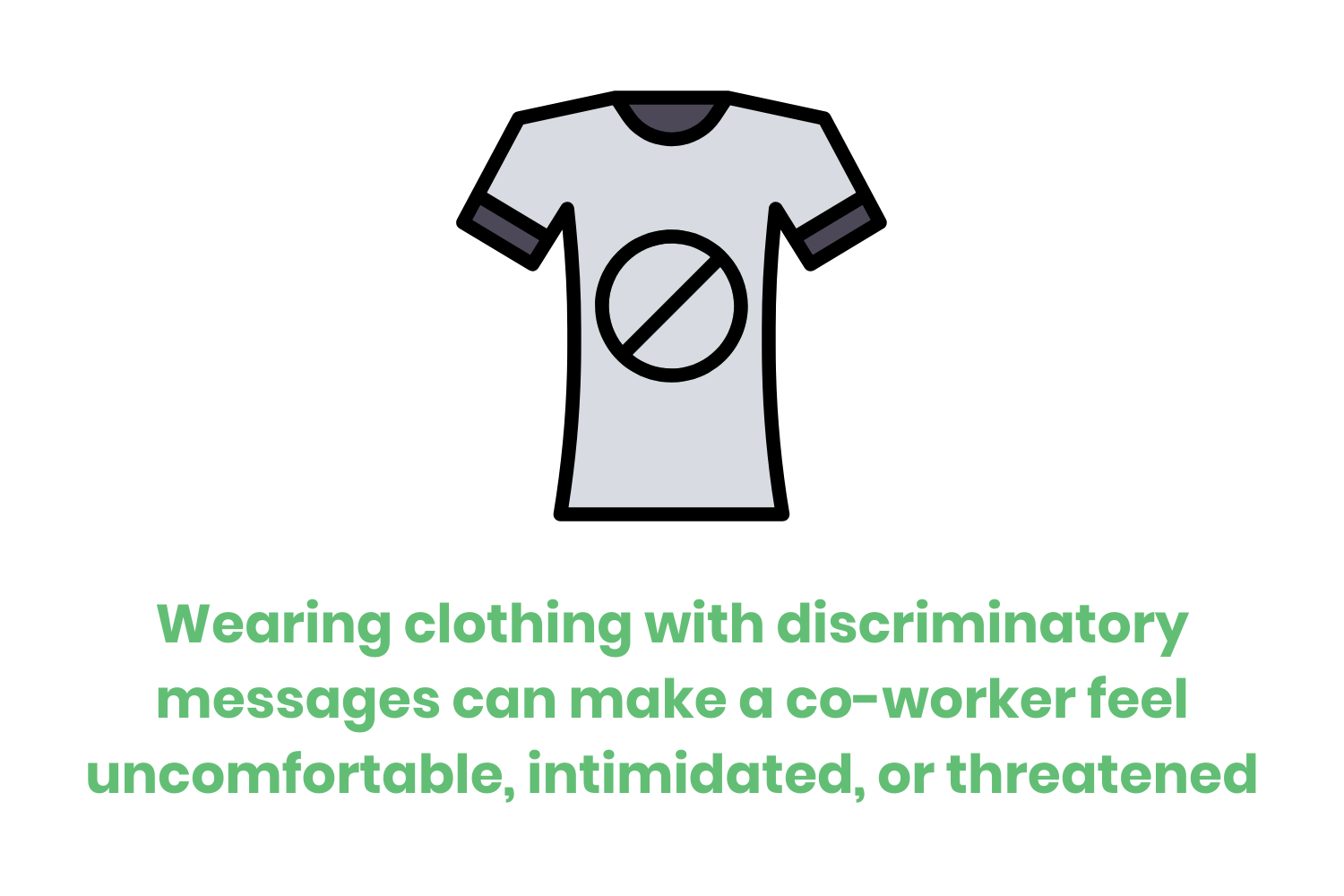
Conclusion

Hopefully, these ten examples have helped answer the question of what’s considered workplace harassment. Certain words and actions are illegal, especially if they persist and cause hostility.
These situations occur more often than some people might think. 35% of employees feel that they’ve experienced harassment and 45% said that they witnessed it from a co-worker. This is more prevalent for women since 41% of them say that they’re victims.
Since it’s such a common problem that impacts so many people, employees must recognize what qualifies as this misconduct. That way, it will be obvious which situations should get reported.
Understanding that these scenarios create a hostile environment and can lead to lawsuits will encourage people in preventing harassment in the first place. This way, there’s more respect for each colleague and people will feel comfortable showing up to work.
Emphasize your product's unique features or benefits to differentiate it from competitors
In nec dictum adipiscing pharetra enim etiam scelerisque dolor purus ipsum egestas cursus vulputate arcu egestas ut eu sed mollis consectetur mattis pharetra curabitur et maecenas in mattis fames consectetur ipsum quis risus mauris aliquam ornare nisl purus at ipsum nulla accumsan consectetur vestibulum suspendisse aliquam condimentum scelerisque lacinia pellentesque vestibulum condimentum turpis ligula pharetra dictum sapien facilisis sapien at sagittis et cursus congue.
- Pharetra curabitur et maecenas in mattis fames consectetur ipsum quis risus.
- Justo urna nisi auctor consequat consectetur dolor lectus blandit.
- Eget egestas volutpat lacinia vestibulum vitae mattis hendrerit.
- Ornare elit odio tellus orci bibendum dictum id sem congue enim amet diam.
Incorporate statistics or specific numbers to highlight the effectiveness or popularity of your offering
Convallis pellentesque ullamcorper sapien sed tristique fermentum proin amet quam tincidunt feugiat vitae neque quisque odio ut pellentesque ac mauris eget lectus. Pretium arcu turpis lacus sapien sit at eu sapien duis magna nunc nibh nam non ut nibh ultrices ultrices elementum egestas enim nisl sed cursus pellentesque sit dignissim enim euismod sit et convallis sed pelis viverra quam at nisl sit pharetra enim nisl nec vestibulum posuere in volutpat sed blandit neque risus.

Use time-sensitive language to encourage immediate action, such as "Limited Time Offer
Feugiat vitae neque quisque odio ut pellentesque ac mauris eget lectus. Pretium arcu turpis lacus sapien sit at eu sapien duis magna nunc nibh nam non ut nibh ultrices ultrices elementum egestas enim nisl sed cursus pellentesque sit dignissim enim euismod sit et convallis sed pelis viverra quam at nisl sit pharetra enim nisl nec vestibulum posuere in volutpat sed blandit neque risus.
- Pharetra curabitur et maecenas in mattis fames consectetur ipsum quis risus.
- Justo urna nisi auctor consequat consectetur dolor lectus blandit.
- Eget egestas volutpat lacinia vestibulum vitae mattis hendrerit.
- Ornare elit odio tellus orci bibendum dictum id sem congue enim amet diam.
Address customer pain points directly by showing how your product solves their problems
Feugiat vitae neque quisque odio ut pellentesque ac mauris eget lectus. Pretium arcu turpis lacus sapien sit at eu sapien duis magna nunc nibh nam non ut nibh ultrices ultrices elementum egestas enim nisl sed cursus pellentesque sit dignissim enim euismod sit et convallis sed pelis viverra quam at nisl sit pharetra enim nisl nec vestibulum posuere in volutpat sed blandit neque risus.
Vel etiam vel amet aenean eget in habitasse nunc duis tellus sem turpis risus aliquam ac volutpat tellus eu faucibus ullamcorper.
Tailor titles to your ideal customer segment using phrases like "Designed for Busy Professionals
Sed pretium id nibh id sit felis vitae volutpat volutpat adipiscing at sodales neque lectus mi phasellus commodo at elit suspendisse ornare faucibus lectus purus viverra in nec aliquet commodo et sed sed nisi tempor mi pellentesque arcu viverra pretium duis enim vulputate dignissim etiam ultrices vitae neque urna proin nibh diam turpis augue lacus.


![[ANSWERED] Is Zelle HIPAA Compliant?](https://cdn.prod.website-files.com/67e2b8210878abcba6f91ae6/68ad098bff78a96fcbd12339_IsZelleHIPAACompliant_224.webp)
![[ANSWERED] Do HIPAA Laws Apply to Employers?](https://cdn.prod.website-files.com/67e2b8210878abcba6f91ae6/68acfaf1f65a5c2c5d2c3a21_DoHIPAALawsExamples_1123.webp)
